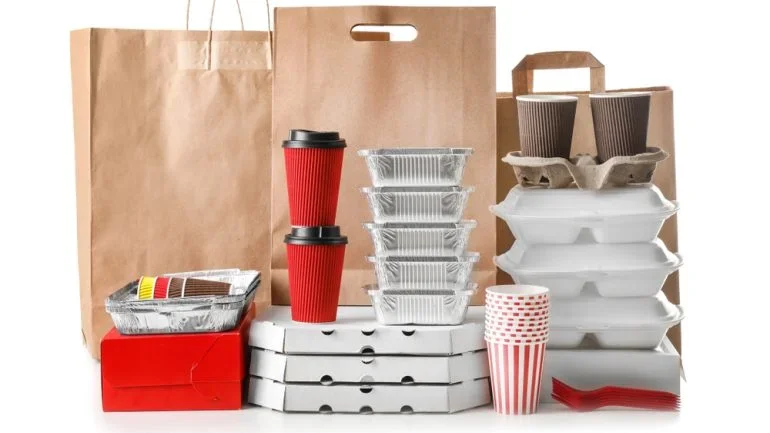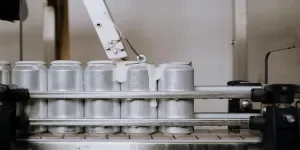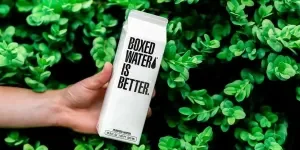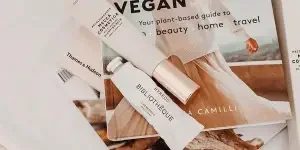sustainable—each shaping the future of industries worldwide.

Packaging plays a vital role in the global supply chain, offering much more than just a protective layer for products. From keeping goods safe during transportation to ensuring the sustainability of materials, packaging continues to evolve.
As consumer demands shift and environmental concerns grow, businesses are exploring a range of packaging types to meet the diverse needs of modern industries.
This article delves into the most prominent packaging types and how they’re shaping the future of the industry.
1. Flexible packaging: convenience meets sustainability
Flexible packaging has gained significant popularity due to its versatile nature and ability to reduce waste. Unlike rigid containers, flexible packaging can be moulded to the shape of the product it contains, providing space-saving benefits.
Materials like plastic film, aluminium foil, and paper are commonly used in flexible packaging, allowing manufacturers to create lightweight yet durable solutions.
One of the biggest advantages of flexible packaging is its ability to extend product shelf life.
By incorporating barriers to moisture, light, and air, flexible packaging ensures products like food and beverages remain fresh for longer periods. The packaging also allows for resealability, providing convenience for consumers who don’t use the entire product in one sitting.
Flexible packaging is also an increasingly sustainable option. Manufacturers are focusing on creating recyclable, compostable, and biodegradable variants to reduce the environmental impact of plastic waste.
Innovations such as the use of plant-based materials and the development of mono-material flexible packaging are making this packaging type a key player in the push for sustainability in the packaging sector.
2. Rigid packaging: robust protection and branding potential
Rigid packaging remains an essential choice for products requiring extra durability and protection. Commonly made from materials such as glass, metal, or rigid plastics, this type of packaging is perfect for goods that need a sturdy, long-lasting solution.
Items like cosmetics, perfumes, electronics, and pharmaceuticals often rely on rigid packaging to maintain product integrity and prevent damage during transportation.
The primary benefit of rigid packaging is its ability to protect products from physical damage. Glass bottles, for example, are often used for beverages and premium food products due to their ability to shield contents from contamination.
Similarly, metal cans are widely used for carbonated drinks because they are resistant to external pressures and impacts.
Beyond functionality, rigid packaging is often preferred by businesses for its branding capabilities. With surfaces that can be easily printed on or embossed, rigid packaging offers ample space for logos, product information, and intricate designs, helping companies to stand out on store shelves.
Furthermore, many consumers associate rigid packaging, particularly glass and metal, with premium quality, making it an ideal choice for high-end products.
While rigid packaging offers protection and marketing advantages, it tends to be heavier and bulkier than flexible alternatives.
This often leads to higher transportation costs and more significant environmental concerns, prompting businesses to seek lighter and more sustainable options within this category.
3. Sustainable packaging: meeting the demand for eco-friendly solutions
As environmental concerns continue to rise, sustainable packaging has become an essential consideration for manufacturers across all industries.
Sustainable packaging refers to any packaging solution designed to minimise its environmental impact, whether by using renewable materials, reducing waste, or improving recyclability.
There are several approaches to creating sustainable packaging solutions, ranging from the use of biodegradable materials to innovations in packaging design aimed at reducing plastic waste.
Materials like paper, cardboard, and bioplastics are gaining traction as viable alternatives to conventional plastic, while also offering recyclability.
Paper and cardboard packaging, for instance, are commonly recycled, making them one of the most environmentally friendly options available.
Bioplastics, derived from renewable resources such as corn or sugarcane, are also becoming more popular as they can break down naturally, unlike traditional plastics.
In addition to the materials themselves, businesses are also focusing on designing packaging that requires fewer resources. For example, minimalistic packaging that uses the least amount of material possible reduces waste and lowers the carbon footprint of the product.
Moreover, brands are exploring refillable and reusable packaging models that reduce the need for single-use options altogether.
The demand for sustainable packaging is not just driven by consumer expectations but is increasingly influenced by government regulations and industry standards.
As countries impose stricter rules on plastic waste and recycling, businesses are adapting by incorporating more sustainable practices into their packaging strategies.
The future of packaging
As packaging continues to evolve, it’s clear that flexibility, durability, and sustainability are key considerations driving innovation in the sector. Flexible packaging provides a lightweight and space-efficient solution, while rigid packaging ensures product protection and branding opportunities.
Meanwhile, sustainable packaging offers a pathway for businesses to reduce their environmental impact while meeting consumer demand for eco-friendly alternatives.
Looking ahead, packaging manufacturers will continue to explore new materials, designs, and technologies to meet the changing needs of industries and consumers.
From plant-based plastics to intelligent packaging solutions, the future of packaging holds exciting possibilities that balance functionality, aesthetic appeal, and environmental responsibility.
With packaging becoming an integral part of branding and sustainability efforts, businesses must stay ahead of trends and adopt packaging solutions that resonate with both consumers and the planet.
Source from Packaging Gateway
Disclaimer: The information set forth above is provided by packaging-gateway.com independently of Alibaba.com. Alibaba.com makes no representation and warranties as to the quality and reliability of the seller and products. Alibaba.com expressly disclaims any liability for breaches pertaining to the copyright of content.



